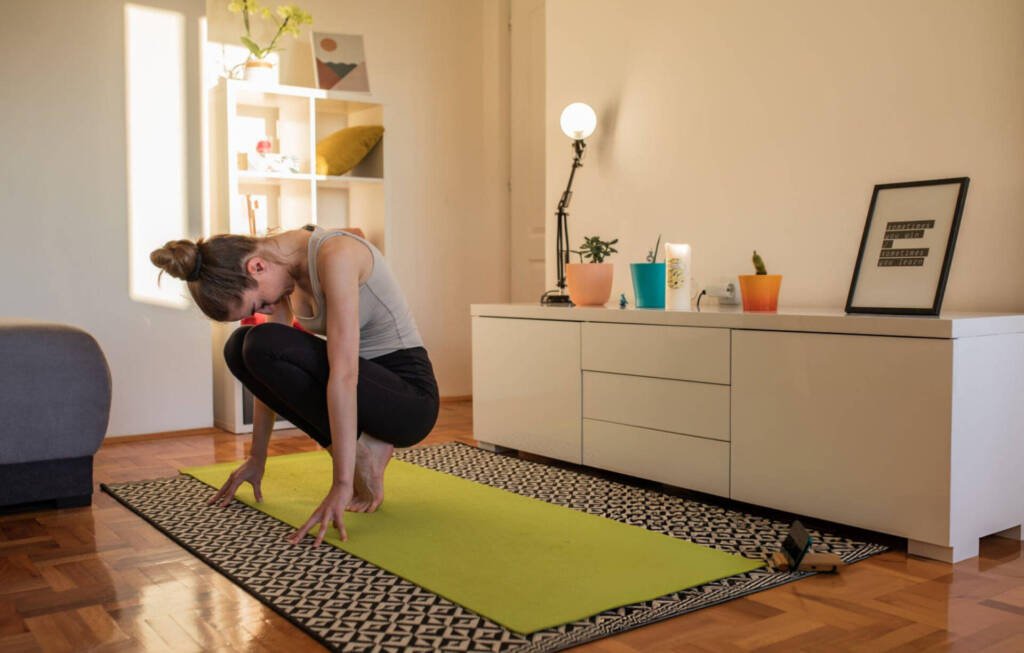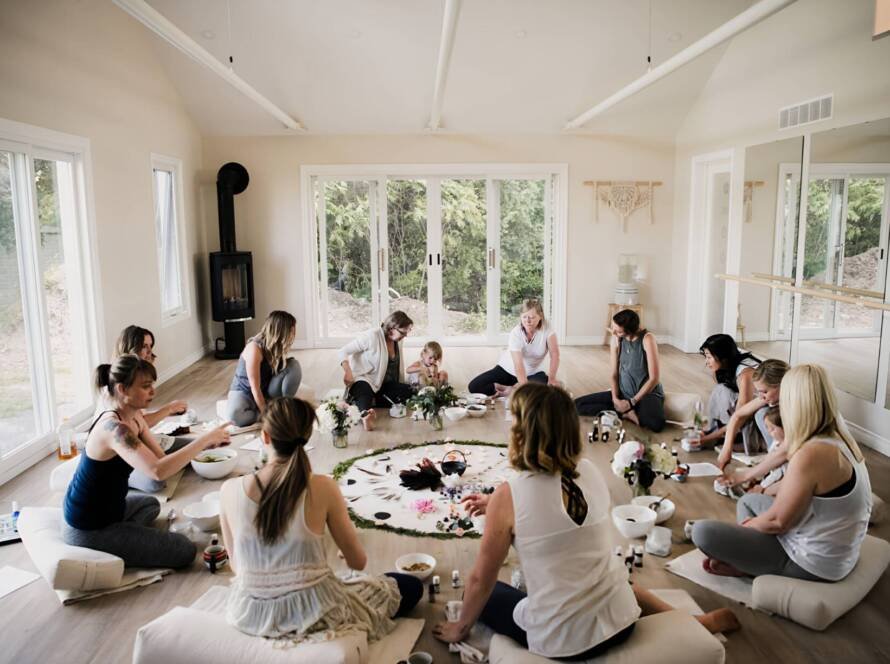In our busy lives, finding moments of peace can often feel like an elusive dream. The constant buzz of responsibilities, distractions, and daily stresses can overshadow our well-being. That’s where the concept of a sacred space at home comes in. This blog post will guide you through the process of creating your personal sanctuary—a dedicated environment that fosters relaxation, spiritual growth, and mindfulness.
Table of Contents
A sacred space is more than just a physical location; it’s a retreat for your mind and spirit. A designated area for spiritual practices and relaxation can significantly enhance your overall quality of life. In this post, we’ll explore the benefits of a sacred space, how to select the right location, essential elements to consider, tips for personalization, and ways to maintain your sanctuary. Get ready to transform your home into a haven of tranquility!
Why You Need a Sacred Space

Mental and Emotional Benefits
Creating a sacred home space can bring remarkable mental and emotional benefits. A dedicated area for relaxation and reflection can reduce stress and anxiety. This is crucial in today’s fast-paced world, where external pressures often compromise mental health. When you step into your sacred space, it signals to your mind that it’s time to unwind and recharge.
Research has shown that a calming environment can enhance mental clarity and focus. By designating a specific area for meditation or quiet reflection, you encourage your brain to associate that space with peace and creativity. This not only aids your ability to concentrate but also boosts your productivity, allowing you to tackle daily tasks with renewed energy and enthusiasm.
Furthermore, being in a tranquil environment can help you reconnect with your inner self and cultivate emotional resilience. This sanctuary provides an opportunity for self-reflection, allowing you to process your thoughts and feelings in a safe space. Sitting in your sacred space can lead to improved emotional well-being and a greater sense of balance in your life.
Spiritual Growth
A personal sanctuary at home facilitates more profound meditation and self-reflection, essential components of spiritual growth. Within your sacred space, distractions are minimized, allowing you to engage in practices that nurture your spirit. Regular meditation or quiet time in this space can amplify your connection to yourself, guiding you on your spiritual journey.
Another essential aspect of a sacred space is creating a sense of peace and connection with the universe. This serene environment invites introspection and mindfulness, leading to profound insights and a deeper understanding of one’s spiritual beliefs. Whether you seek clarity, guidance, or simply a moment of stillness, your sacred space can be a powerful tool for spiritual exploration.
By dedicating time to your personal sanctuary, you cultivate a routine that honors your spiritual practices at home. Over time, this commitment can lead to significant personal transformations, fostering a deeper connection to your spiritual self and the world around you.
Choosing the Right Location

Finding a Quiet and Private Spot
The first step to designing a sacred space is selecting an appropriate location within your home. Look for a quiet, private spot that feels inviting and distractions-free. This could be a corner of your bedroom, a spare room, or even a nook in your living area. The key is identifying an area where you feel at ease, allowing you to focus entirely on your spiritual practices.
Consider the space’s atmosphere when making your decision. Ideally, this location should inspire calmness and tranquility. Choose an area with minimal foot traffic and noise. You want to create an environment that allows you to disconnect from the outside world and immerse yourself in your inner thoughts.
Additionally, think about the potential for personalization in your chosen location. A flexible spot can evolve as your spiritual practices grow. Having a space that can accommodate various activities—such as meditation, journaling, or yoga—will enhance its functionality and appeal.
Considering the Energy of the Space
Evaluating the energy of different areas in your home is crucial when selecting the right spot for your sacred space. Each location carries its unique energy, influenced by factors such as lighting, ventilation, and surrounding elements. Take a moment to walk around your home and notice how you feel in various locations. Trust your instincts—if a space feels peaceful and uplifting, it’s likely a good candidate.
Natural light plays a significant role in a space’s energy. Bright, natural light can invigorate your mood, while dim lighting may foster a more relaxed atmosphere. If your chosen location lacks adequate sunlight, consider enhancing it with soft lamps or candles that create a warm, welcoming glow.
Ventilation is another essential factor to consider. A space that feels stuffy or stagnant may not be conducive to relaxation and meditation. Ensure your area has good airflow to promote a fresh and revitalizing environment.
Essential Elements of a Sacred Space

Comfortable Seating
Comfortable seating is one of the most important aspects of a sacred space. You want to create an area inviting you to sit, relax, and engage in your spiritual practices. There are various options to consider, from meditation cushions and floor pillows to ergonomic chairs or yoga mats.
When selecting seating, prioritize comfort and support. The right chair or cushion can significantly enhance your experience, allowing you to focus on your practice without distractions. If you enjoy meditation, a firm cushion may suit you best, while those who prefer journaling or reading might opt for a cozy armchair.
Feel free to layer your seating with soft throws or decorative pillows to create a uniquely personal touch. You’ll be more likely to spend time in your sacred space by curating a comfortable resting area.
Altar or Focal Point
An altar or focal point can serve as a beautiful centerpiece for your sacred space. This area can hold meaningful objects that resonate with your spiritual beliefs, personal aspirations, or cherished memories. Consider incorporating items such as candles, crystals, statues, or personal mementos that inspire reflection and connection.
Creating an altar does not need to be complex simplicity often resonates deeper. A small table or shelf can serve as a base, where you can arrange your chosen objects thoughtfully. Reflect on each item’s significance, allowing your altar to evolve as your spiritual practice develops.
Incorporating elements such as flowers or natural objects can add beauty and intention to your altar. These items serve to enhance the energy of your sacred space, creating an inviting atmosphere for meditation and self-reflection.
Aromatherapy and Sound
Incorporating aromatherapy and sound into your sacred space elevates the atmosphere to new heights. The sense of smell is a powerful trigger for relaxation and mindfulness. Essential oils, incense, or scented candles can create a calming environment that promotes serenity and focus.
Consider using calming scents such as lavender, sandalwood, or frankincense to enhance your experience. You can diffuse essential oils or place candles around your sacred space for a soothing fragrance. Be mindful of any allergies or sensitivities you may have when selecting scents.
Sound also plays a crucial role in creating a tranquil atmosphere. Calming sounds like chimes, bells, or soft background music can deepen your meditation experience. Consider a minor water feature that adds the gentle sound of flowing water to your space, fostering a serene, relaxing environment.
Nature Elements
Integrating natural elements is essential for enhancing the energy and ambiance of your sacred space. Natural elements like plants, flowers, or stones can foster a connection to the earth and promote a sense of peace. Consider incorporating indoor plants that thrive in low light, such as peace lilies or snake plants, which also improve air quality.
You might also like to create a small garden or display natural objects that resonate with you—stones collected from your travels, shells from the beach, or dried flowers. These items beautify your space and remind you of cherished memories and experiences.
When incorporating natural elements, prioritize sustainability. Choose locally sourced or ethically harvested items to minimize your environmental impact. Connecting with nature fosters a sense of harmony and tranquility in your sacred space.
Personalizing Your Sacred Space

Reflecting Personal Beliefs and Practices
Your sacred space should truly reflect your personal beliefs and spiritual practices. Consider what symbols, objects, or materials resonate with you deeply. Incorporate items representing your values and intentions, whether religious symbols, meaningful quotes, or spiritual books.
This personalization gives your sacred space a unique character, ensuring it feels welcoming and comforting to you. Use art, colors, and textures that align with your personality and enhance your experience. Consider adding inspirational quotes or affirmations that motivate you during your time in the sanctuary.
By customizing your sacred space, you create an environment that invites introspection and supports your spiritual growth. Each time you enter this personal sanctuary, you’ll be reminded of your beliefs and intentions, reinforcing your commitment to self-care.
Creative Expression
Encouraging creative expression in your sacred space can enhance your connection to it. Display art pieces, photographs, or handmade items that resonate with your spirit. This innovative element can inspire you and make your space feel more alive and dynamic.
Consider incorporating DIY projects to make the space unique. Painting a calming mural, crafting a dreamcatcher, or creating a vision board can add a personal touch. Engage in activities that allow you to express your feelings and thoughts, fostering a deeper connection to your sanctuary.
Allow your creativity to flow freely in this space, transforming it into a true reflection of who you are. Engaging with your artistic side will cultivate a sense of ownership and pride in your sacred space.
Maintaining Your Sanctuary

Regular Cleaning and Upkeep
Regular cleaning and upkeep are vital for preserving the serenity of your sacred space. A clutter-free environment promotes relaxation and mindfulness, allowing you to focus better during your spiritual practices. Set aside time each week to tidy up and refresh your sanctuary.
Consider establishing a regular maintenance routine, including dusting, vacuuming, and reorganizing your altar. You can also declutter any items that no longer resonate with you, making room for fresh energies and intentions.
Investing in your sacred space shows your commitment to self-care and personal growth. Keeping the area clean and organized will create a welcoming environment that encourages meditation, reflection, and relaxation.
Refreshing the Energy
Refreshing the energy in your sacred space is essential for maintaining its vibrancy. Over time, a space’s energy can become stagnant, affecting your experience. Several methods to energetically cleanse your sanctuary include smudging with sage, using crystals, or incorporating sound.
Smudging involves burning sage or other herbs to clear negative energy, inviting positive vibrations into your space. You can also use crystals like clear quartz or amethyst to absorb and amplify energy, placing them around your altar or seating area.
Periodic updates to your altar or focal point can also rejuvenate the energy. Consider rotating the items displayed or adding new meaningful objects to keep your space fresh and exciting. Regularly refreshing the energy will create a sanctuary that continuously supports your spiritual growth.
Conclusion

Creating a sacred space at home is an empowering and transformative experience. The benefits of having a personal sanctuary extend beyond physical space—they encompass mental clarity, emotional well-being, and spiritual growth. Following the steps outlined in this blog post, you can design a tranquil haven that nurtures your mind and spirit.
Remember, there’s no need to rush. Start small and gradually build your sacred space, allowing it to evolve alongside your personal growth. A dedicated sanctuary offers endless opportunities for reflection, relaxation, and exploration, making it an invaluable addition to your home.
If you’re eager to take the next step, consider exploring local resources, workshops, or online communities that focus on creating sacred spaces. The supportive connections you develop will enhance your experience and empower you on your spiritual journey. Your home sanctuary awaits—embrace the transformation!





